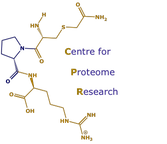MUPs in individual recognition
Cheetham SA, Thom MD, Jury F, Ollier WE, Beynon RJ, Hurst JL. (2007) The genetic basis of individual-recognition signals in the mouse. Curr. Biol. 17, 1771-1777.[PUBMED][PDF]
The major histocompatibility complex (MHC) is widely assumed to be a primary determinant of individual-recognition scents in many vertebrates [1-6], but there has been no functional test of this in animals with normal levels of genetic variation. Mice have evolved another polygenic and highly polymorphic set of proteins for scent communication, the major urinary proteins (MUPs) [7-12], which may provide a more reliable identity signature ([13, 14] and A.L. Sherborne, M.D.T., S. Paterson, F.J., W.E.R.O., P. Stockley, R.J.B., and J.L.H., unpublished data). We used female preference for males that countermark competitor male scents [15-17] to test the ability of wild-derived mice to recognize individual males differing in MHC or MUP type on a variable genetic background. Differences in MHC type were not used for individual recognition. Instead, recognition depended on a difference in MUP type, regardless of other genetic differences between individuals. Recognition also required scent contact, consistent with detection of involatile components through the vomeronasal system [6, 18]. Other differences in individual scent stimulated investigation but did not result in individual recognition. Contrary to untested assumptions of a vertebrate-wide mechanism based largely on MHC variation, mice use a species-specific [12] individual identity signature that can be recognized reliably despite the complex internal and external factors that influence scents [2]. Specific signals for genetic identity recognition in other species now need to be investigated.
The major histocompatibility complex (MHC) is widely assumed to be a primary determinant of individual-recognition scents in many vertebrates [1-6], but there has been no functional test of this in animals with normal levels of genetic variation. Mice have evolved another polygenic and highly polymorphic set of proteins for scent communication, the major urinary proteins (MUPs) [7-12], which may provide a more reliable identity signature ([13, 14] and A.L. Sherborne, M.D.T., S. Paterson, F.J., W.E.R.O., P. Stockley, R.J.B., and J.L.H., unpublished data). We used female preference for males that countermark competitor male scents [15-17] to test the ability of wild-derived mice to recognize individual males differing in MHC or MUP type on a variable genetic background. Differences in MHC type were not used for individual recognition. Instead, recognition depended on a difference in MUP type, regardless of other genetic differences between individuals. Recognition also required scent contact, consistent with detection of involatile components through the vomeronasal system [6, 18]. Other differences in individual scent stimulated investigation but did not result in individual recognition. Contrary to untested assumptions of a vertebrate-wide mechanism based largely on MHC variation, mice use a species-specific [12] individual identity signature that can be recognized reliably despite the complex internal and external factors that influence scents [2]. Specific signals for genetic identity recognition in other species now need to be investigated.
